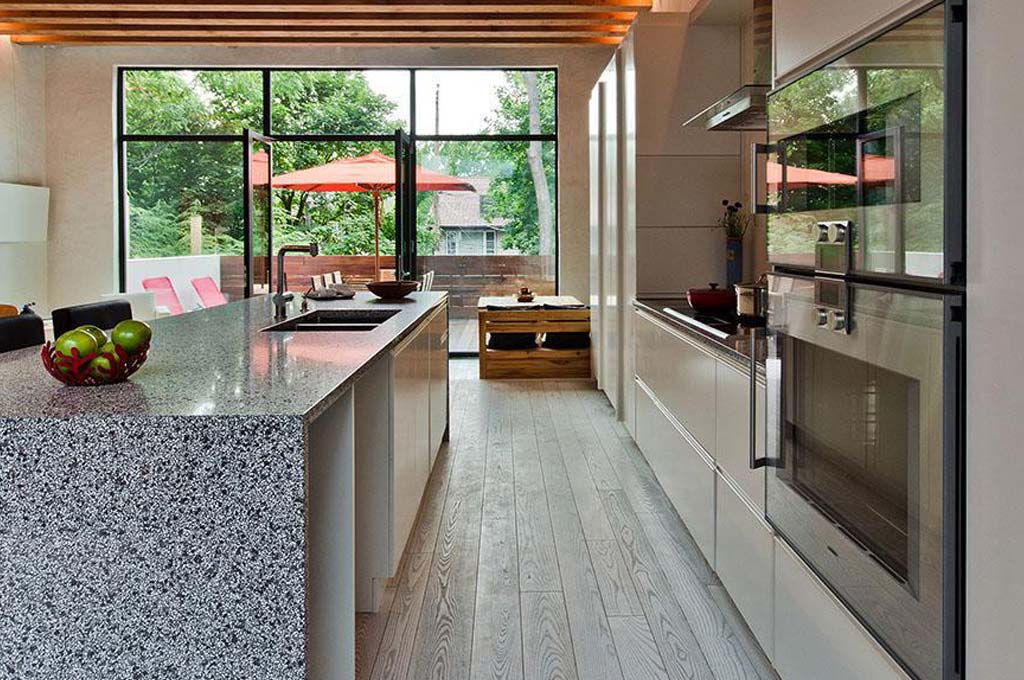Is it a good idea to install hardwood flooring in the kitchen? This is a question we often hear at SOLŪ Hardwood!
Whether in your daily routine or during the liveliest gatherings, the kitchen represents the heart of the home, a place of comfort, experimentation, celebration, and more.
The initial instinct has long been to cover the entire area under the cabinets with tiles to guard against water and inevitable spills. However, in recent years, conventions have relaxed, and customers have been eager to have hardwood flooring in the kitchen. The idea is simple: they want to extend the floor covering throughout the entire ground floor, creating a sense of spaciousness upstairs.
Varnished Flooring in the Kitchen
Varnished flooring comes with a useful defense against liquids. It’s like a sealed surface, akin to a glass tabletop. Damage is not absorbed but rather beads up on the floor. However, there is still a vulnerable part regarding liquids: all the gaps between the planks. In both the kitchen and the rest of the house, varnished flooring that is scratched or dented cannot be repaired until a full sanding operation is undertaken.
Oiled Flooring in the Kitchen
Oiled flooring is not sealed; it breathes and relies on the principle that the grain is saturated with oil, preventing external agents from penetrating. The longer it’s been since the last refresh, the more the floor will dry out and tend to absorb liquids. This is why there is a certain risk when it comes to greasy substances. Otherwise, standing water on oiled flooring is prone to leave a mark. So, you should be quite vigilant and keep a cloth nearby. The most significant advantage of oiled flooring is its repairability. Always use oil tinted to match your floor’s color to ensure you can make minor repairs over time. Furthermore, a light sanding with sandpaper is sufficient to significantly reduce a minor defect before concealing it with oil.
Both types of finishes do not prevent a wooden kitchen floor from getting marked if it receives a heavy or sharp object. Also, do not underestimate the risk of water damage due to the presence of the sink and dishwasher in the kitchen. Therefore, hardwood flooring is at risk of swelling and not returning to its original state.
In summary, a wooden kitchen floor is a resounding “yes” from a design perspective. But it requires particular attention and quick responses at all times!
Would you dare to install hardwood flooring in your kitchen? Some will respond affirmatively because the design benefits far outweigh the perceived risks. Others will answer negatively because they see the risks as outweighing the design advantages.
All answers are valid, as long as you are comfortable and stand by your decision!
